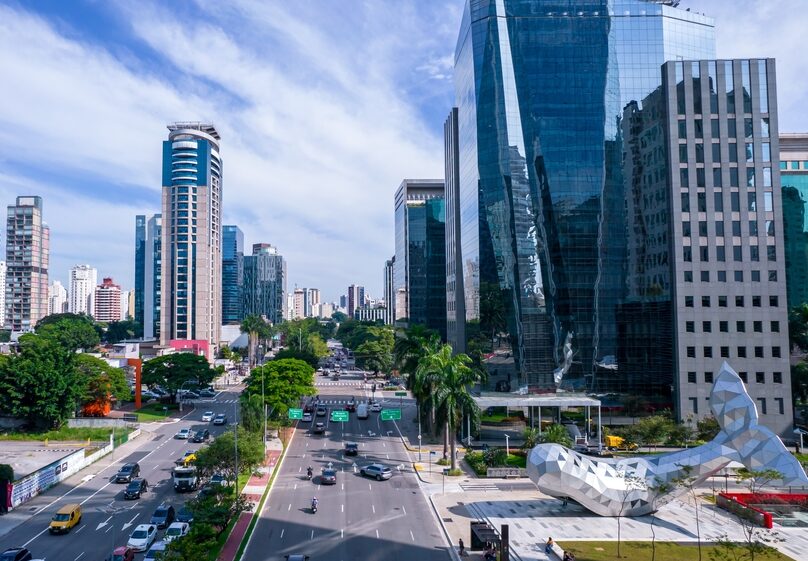The location chosen to be the headquarters of large national and multinational companies, the city of São Paulo is currently the largest commercial and financial center in the country of Brazil.
The city, which was built on industrial bases, has assumed an increasing role in the services sector, becoming an administrative and business hub for companies throughout Brazil. See more in our article about the history of São Paulo.
See where the city’s business centers are, where financial transactions, commercial contracts are carried out and the neighborhoods with the highest concentration of offices in the city:
B3 STOCK EXCHANGE
B3 S.A. – Brasil, Bolsa, Balcão (in English, B3 – Brazil Stock Exchange and Over-the-Counter Market), formerly BM&FBOVESPA, is the most significant in Latin America and the only one in Brazil. According to the visual capitalist website, B3 is the twentieth most important stock exchange in the world.
Located in the historic center of the city, it is possible to visit the museum located inside the B3 building. The tour is free, but you need to schedule a date and time via MUB3 website.
Address: R. Quinze de Novembro, 275 – Centro Histórico de São Paulo, São Paulo – SP – Get Directions in Google Maps

PAULISTA AVENUE
Considered one of the most important avenues in the city, Avenida Paulista is a great symbol of São Paulo. Located at one of the highest points in the city and just 3 kilometers long, it is considered one of the country’s main financial and business centers as it houses several banks, multinational companies, consulates and shopping centers.
It was opened in 1891, with a name that honors the city’s population. Until the 1950s, its character was more residential, being where the coffee elite had their mansions. From the 1960s/70s onwards, new urban planning guidelines in the city began to encourage the construction of large commercial buildings on the avenue.
Currently, it is not just its business vocation that sets Avenida Paulista apart. It is also a cultural exponent as it houses several spaces such as theaters, cinemas and museums.

BERRINI AVENUE
More commonly known simply as ‘Berrini’, The Engineer Luis Carlos Berrini Avenue project began in the late 1970s as an alternative business region to the famous Avenida Paulista, an area where high rental values eventually led investors to seek more advantageous alternatives for their businesses.
In the 1980s, ‘Avenida Berrini’ and its surroundings gradually consolidated with the construction of several buildings and improvements in the region’s infrastructure. Additionally, more accessible prices for purchasing and renting corporate spaces began to attract the attention of large companies that started establishing themselves in the area.
Currently, a study by Exame magazine indicates that ‘Avenida Berrini’ has the highest concentration of IT and Telecom companies, as well as industrial headquarters.

FARIA LIMA AVENUE
Another important avenue in São Paulo, Brigadeiro Faria Lima Avenue, is named after the mayor who envisioned it. Upon its inauguration in 1970, it attracted the installation of São Paulo’s first shopping mall, Shopping Iguatemi, a fact that boosted the avenue as a new business hub.
From the 1980s, the avenue began its process of verticalization and was even referred to as the ‘new Paulista Avenue‘ due to the similarity of the skyline composed of tall buildings.
The region around Faria Lima Avenue is characterized by its proximity to the most valued residential area of the city, good restaurants, and luxury commerce. Besides its prime location, modern, sophisticated, and high-quality constructed buildings drew the attention of major companies that settled in the area.
For these reasons, Faria Lima Avenue now has some of the most valued square meters in the city. It is considered the country’s main financial center, given the significant presence of bank headquarters and investment institutions, as indicated in a report by Exame magazine.


